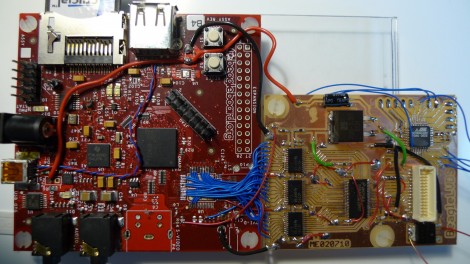We’re always impressed with the number of laptop displays we’re able to pick out of the trash. Most of the time the computer is borked beyond repair so we end up with a lot of functional but unusable LCD panels. As a service to us all, [EiNSTeiN_] figured out how to control an LCD panel using a cheap homebrew FPGA board.
LCD panels don’t use a simple protocol like VGA for turning pixels on and off. Instead, the very high-speed LVDS is used. LVDS is beyond the capabilities of simple microprocessors, so [EiNSTeiN_] built himself a clone of an XuLA FPGA prototyping board and set to work. After figuring out the signal lines to the panel, [EiNSTeiN_] pored over the timing diagrams for the LVDS controller and the LCD panel. From the data sheets, he figured out data is usually sent to the panel at about 500 MHz. The homebrew FPGA board couldn’t manage that speed so [EiNSTeiN_] cut the FPGA clock in half.
While LCD’s 60 fps refresh rate was reduced to 30 fps, [EiNSTeiN_] says there’s only a little flicker. Not bad for something that could have easily been trashed.













